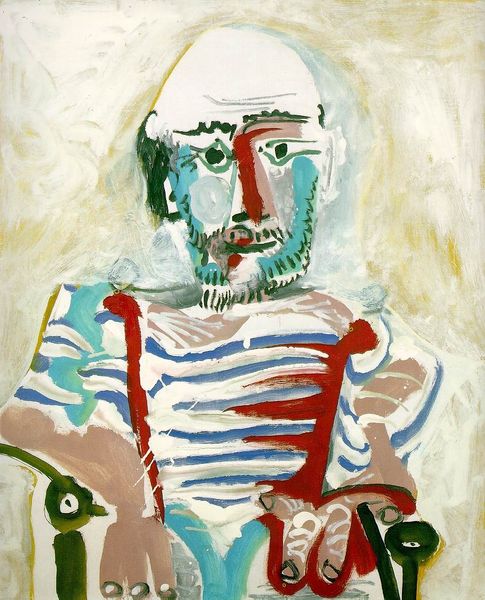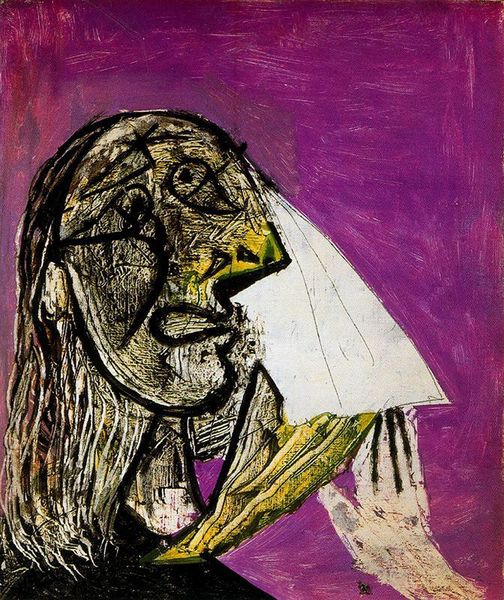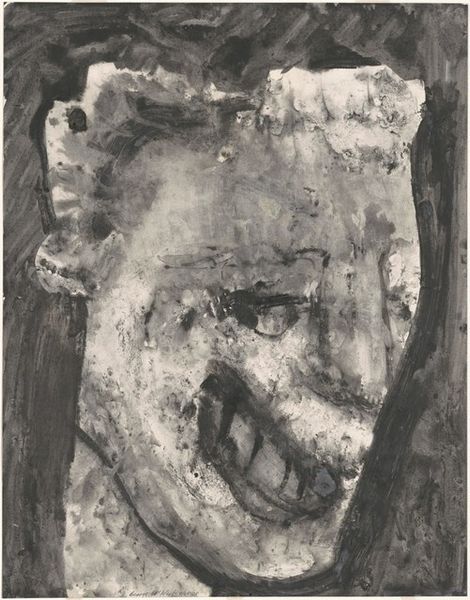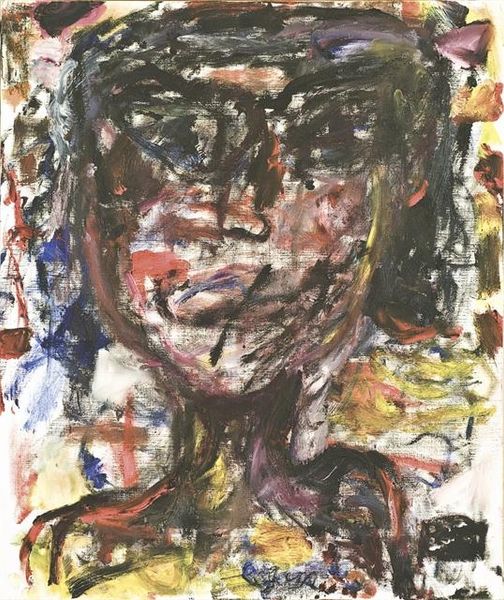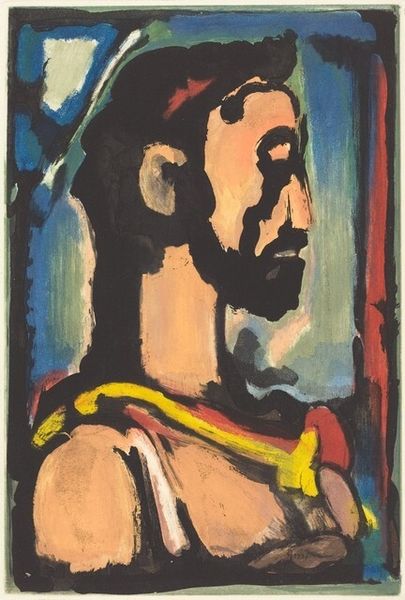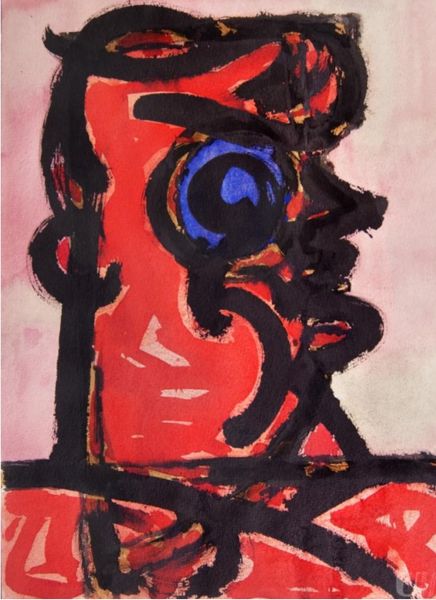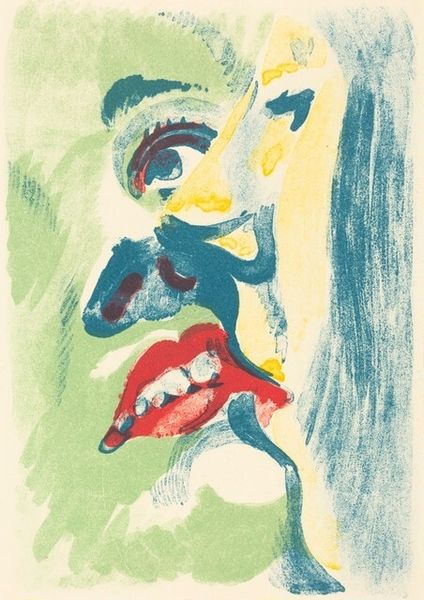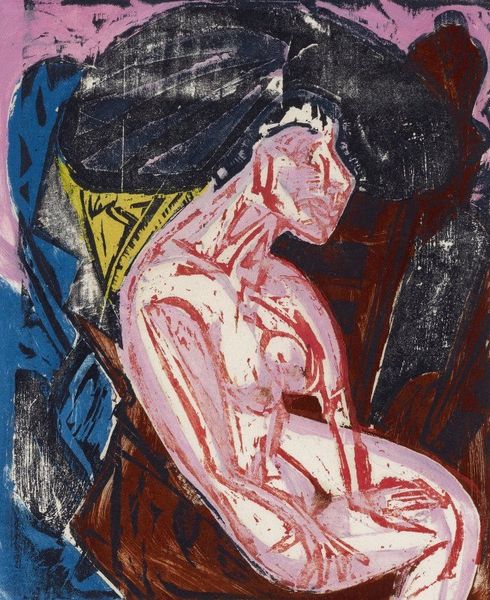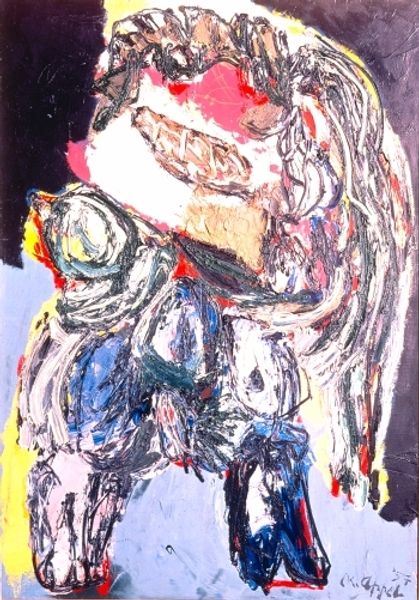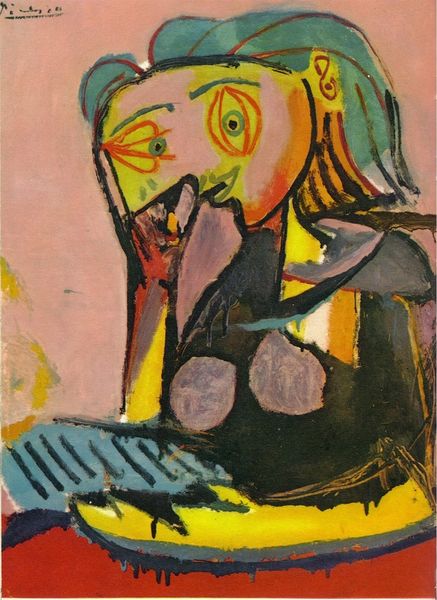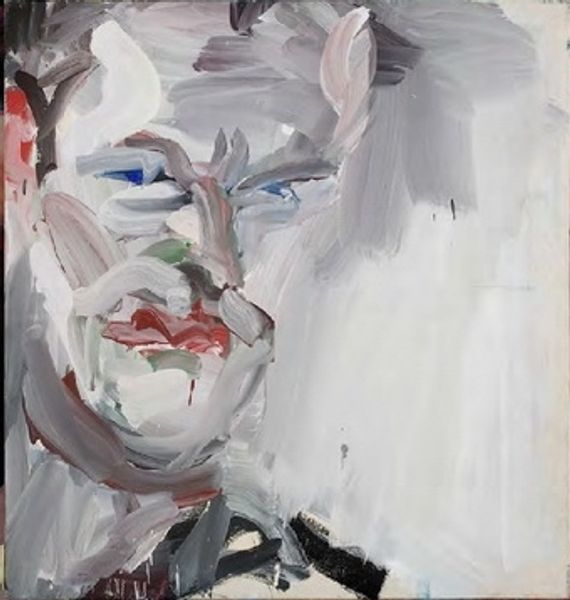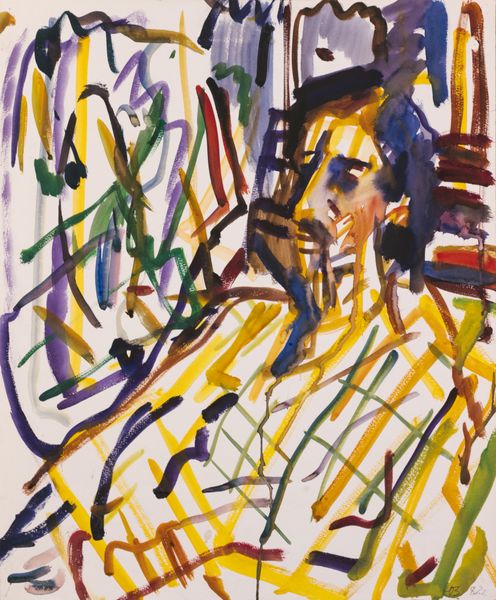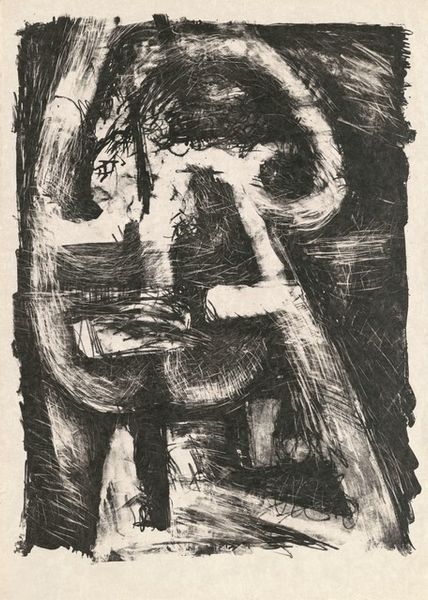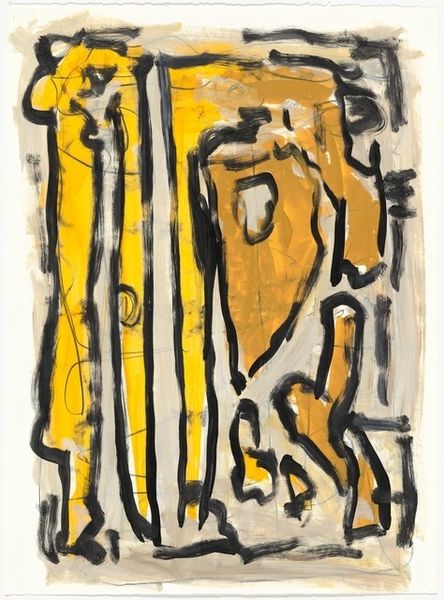
#
figurative
#
facial expression drawing
#
vector art
#
caricature
#
fluid art
#
acrylic on canvas
#
spray can art
#
facial painting
#
portrait drawing
#
portrait art
#
digital portrait
Copyright: Public Domain: Artvee
Curator: The artwork before us is "Schweizer Bäuerin," or "Swiss Peasant Woman," a 1927 piece by Ernst Ludwig Kirchner. Editor: My first thought is it's strikingly unsettling. The distortion, the almost feverish quality of the lines... It's a portrait but one steeped in unease. Curator: Kirchner's work, especially during this period, was heavily influenced by his experiences during World War I and his subsequent struggles with addiction. The portrait itself is ink and watercolor on paper; notice how the fluidity of these materials allows for a certain raw expressiveness. Editor: Absolutely, and that fluidity mirrors the fluidity of identity, or perhaps the dissolution of it. He uses inexpensive materials, focusing on line and color divorced from academic precision. I wonder about Kirchner's relationship with the subject, this "Swiss Peasant Woman." What were the circumstances of its production? Was it commissioned, a study, or something more personal? How does that impact the gaze in this work? Curator: Kirchner had moved to Switzerland after his wartime experiences. There was an engagement with rural life, even as he never fully detached from his angst. What strikes me is how this piece challenges conventional portrayals of rural simplicity. Editor: Precisely. This isn’t a romanticized image of the rural populace. There’s a raw humanity here, bordering on grotesque. Curator: And the framing of rural subjects connects with ideas around national identity during the interwar period. These artworks acted in many cases as symbols, even weapons in public debates about art’s purpose and relationship with everyday life. Editor: True. His move to Switzerland was a move away from the dominant artistic circles in Germany but still it begs to wonder, who was this painting made for, and what would that first audience made of such unsettling subject matter? The historical circumstances become so important in attempting an understanding. Curator: I appreciate how this examination brings forward considerations beyond art's intrinsic formal values, pushing us to question its origins and broader significance. Editor: And conversely, seeing the piece through your eyes illuminates the artist's choices about materiality, connecting his mental state with a particular cultural setting of production. It all coalesces into such a charged vision.
Comments
No comments
Be the first to comment and join the conversation on the ultimate creative platform.
